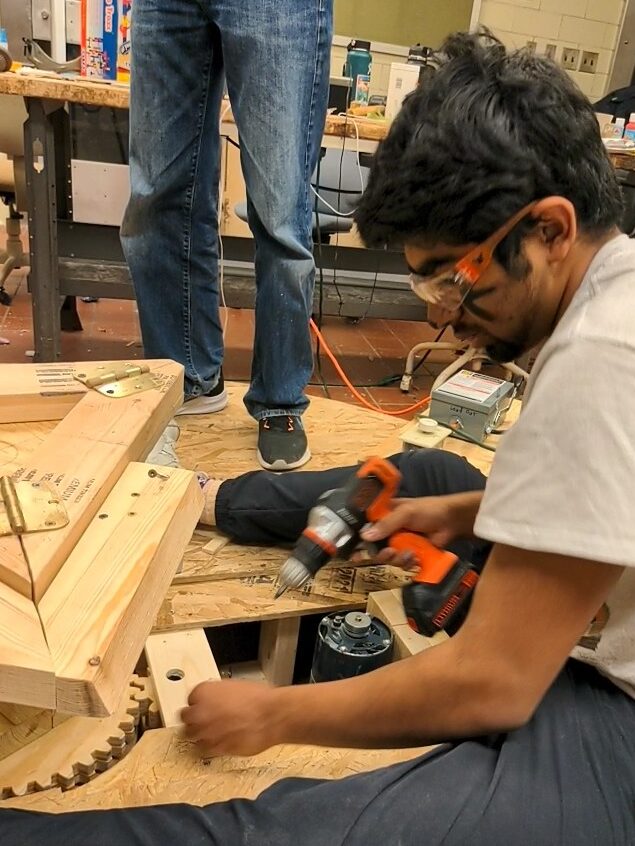
Purdue’s Chain React team is a storied club that has been building Rube-Goldberg machines and winning competitions for years. Even before I got to campus, I knew I wanted to get involved with that kind of hands-on work and collaboration.
As a member of the team, I helped design, build, and paint multiple of the steps and transitions on the machine. I also did a lot of work to try and implement a rotating-base design for the machine that was, ultimately, unsuccessful.
Our machine won the Purdue National Chain React Competition in 2022, amazingly registering a perfect run in our final attempt.
The Machine:

The full Rube-Goldberg Machine
The competition was very open-ended, but each team’s machine had to perform the same end goal: to put a pair of sunglasses on some object as the final step.
The machine was designed with a theme of Vikings and Dragons. All of the steps and transitions are somehow aligned with that main theme. This is footage of the only perfect run the machine ever had (which was, amazingly, at the competition and the last time the machine ever ran).
My Contributions:
I worked on multiple different steps and mechanisms. Here are a few of them:
I spent a lot of time and effort trying to get the base of the machine to rotate. In the original design plan, the machine’s thirds were designed to rotate so that everything would fit in a circular cross-section yet viewers would be able to see all the action.
After lots of effort, tinkering, and tuning, I was able to drive the skeleton of the machine with the old garage door motor we had. Unfortunately, we later found that it simply was not strong enough to drive the full weight of the machine’s sections with the gear arrangement we had given it. We were forced to scrap the rotation and leave the machine in the three stationary stages from the video above.
The Viking Horns step are a relatively simple ball ramp to mousetrap design. However, the complications arose in tuning it to make the ball bounce in a controlled, repeatable way and to also actuate the sword pulling correctly after the mousetrap every time.
This crossbow (shown in a very early stage) makes use of a simple rubber band and hand trigger. The parts were beautified and replaced, but the basic design remained intact on the final machine.